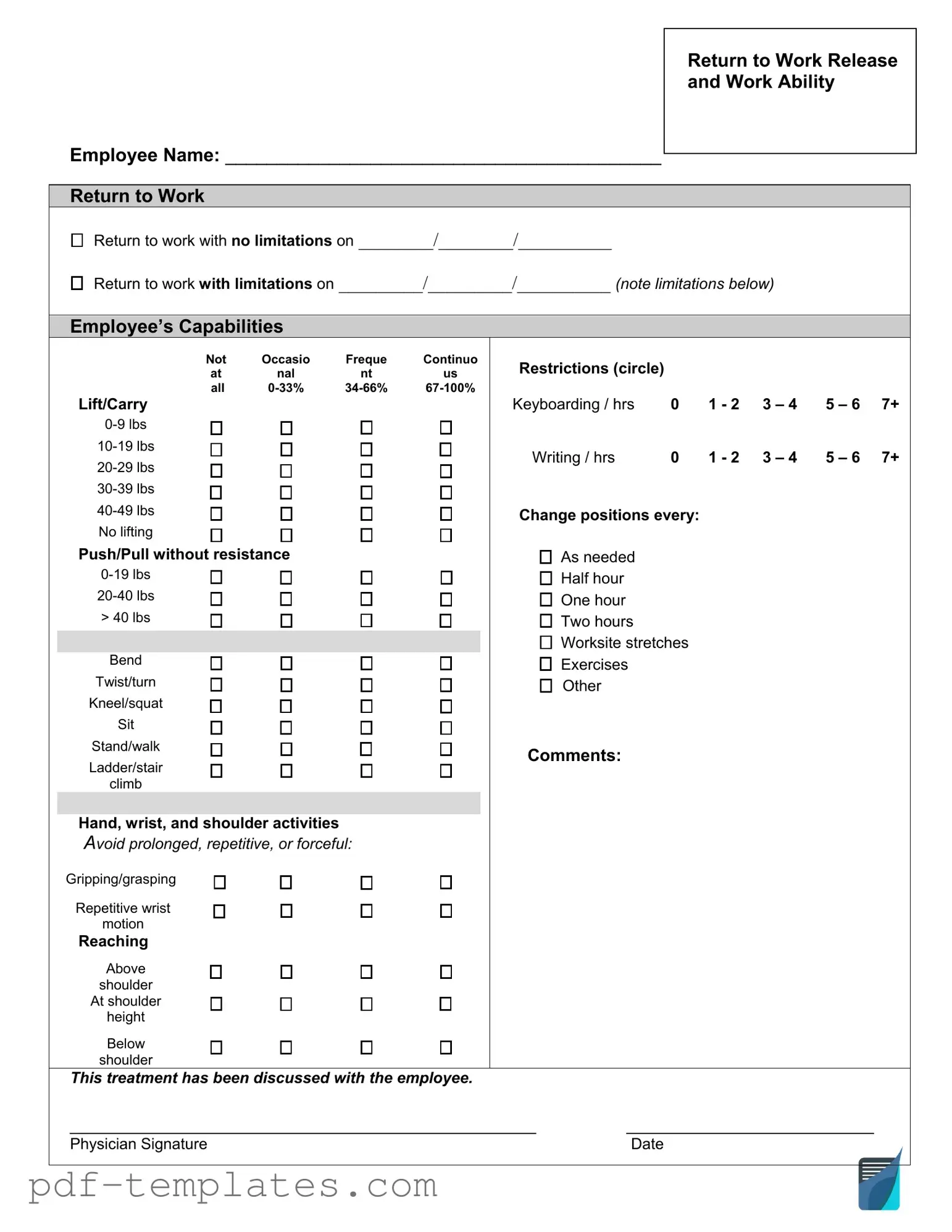The Work Release form shares similarities with the Medical Release form. Both documents authorize the release of information, but the Medical Release form specifically pertains to an individual's health records. This form allows healthcare providers to share medical information with designated parties, ensuring that the individual’s privacy is respected while facilitating necessary communication regarding their health status.
Another document that resembles the Work Release form is the Consent to Treat form. This form is used primarily in healthcare settings, allowing medical professionals to provide treatment to a patient. Like the Work Release form, it requires the individual’s consent and outlines the scope of what is being agreed upon, ensuring that the individual is informed about the actions being taken on their behalf.
The Authorization for Release of Information form is also comparable to the Work Release form. This document allows individuals to authorize the release of their personal information, which may include financial, educational, or employment records. Both forms are designed to protect the individual's rights while allowing specific information to be shared with authorized parties for legitimate purposes.
The Power of Attorney form is another document that functions similarly to the Work Release form. While the Work Release form grants permission for specific employment-related activities, the Power of Attorney allows an individual to designate another person to make decisions on their behalf. This can include financial, legal, or healthcare decisions, and like the Work Release form, it requires clear consent from the individual.
The Release of Liability form is also akin to the Work Release form in that it involves consent and acknowledgment of risk. This document is often used in recreational activities, where participants agree to waive their right to sue for any injuries sustained. Both forms emphasize the importance of understanding the implications of consent and the responsibilities that come with it.
In addition to these essential documents, individuals may also find it beneficial to familiarize themselves with the All California Forms, which provide a range of legal templates and resources that could support their various needs, including the processes involved in legal registrations or compliance requirements.
Lastly, the Non-Disclosure Agreement (NDA) can be compared to the Work Release form in terms of confidentiality. An NDA protects sensitive information from being disclosed to unauthorized parties. While the Work Release form allows for the sharing of specific work-related information, the NDA restricts the sharing of proprietary or confidential information, highlighting the need for trust and security in professional relationships.
